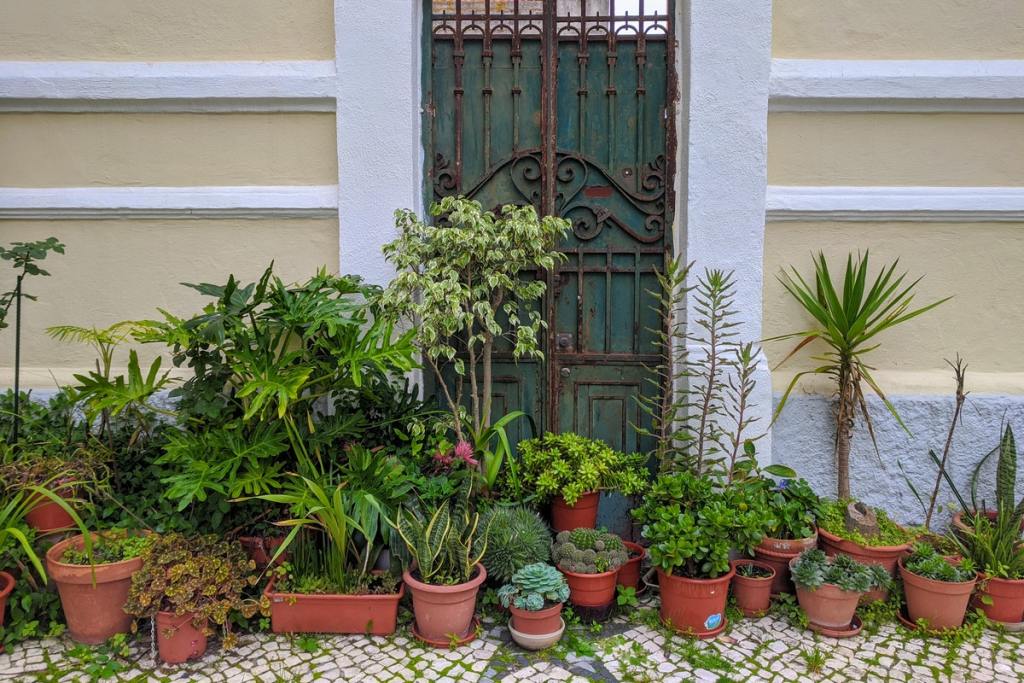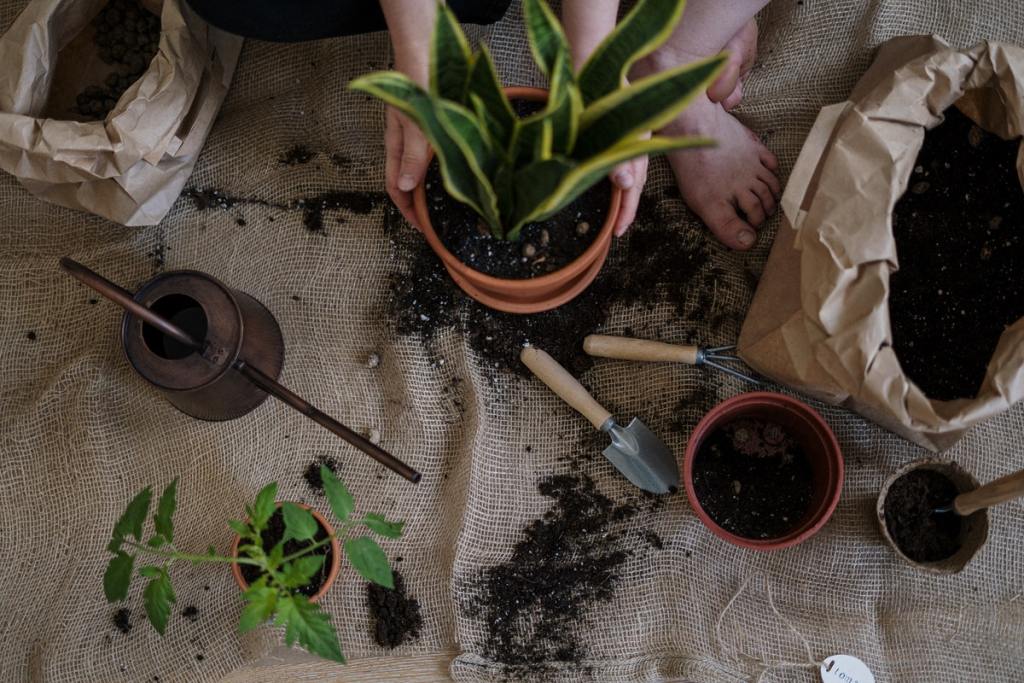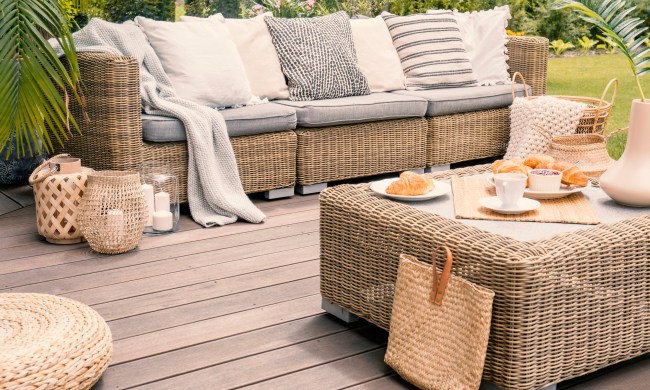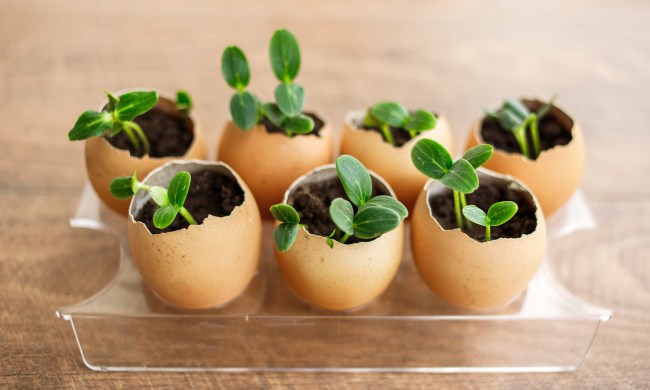Many people think that without a big backyard, they don’t have a feasible space for a beautiful garden. But did you know it can be really easy to create a back porch garden? Small deck gardening is, naturally, a bit different than your average gardening bed, but as long as you’re familiar with the plants and provide the best care possible, you’ll have no problem growing your plants on your deck.
Choose the best containers for your space
All your containers should be well-draining, but make sure you’re picking ones that don’t overpower your porch. Small deck gardening is all about making use of the space you’ve got. There are an array of containers you can select, from baskets to terracotta pots. If you’re particularly interested in the design aspect of the garden, the best way to make it look coherent will be to buy pots that work well together; however, sometimes a more eclectic mix brings a sense of fun to your back porch garden.
The biggest thing to be mindful of will be porch damage. Even with trays for your plants, the water can spill over and soak your deck. If the planters are directly on the surface, the water will collect under them and can cause rot, mold, and other damage. To prevent that, consider using plant stands, tables, and trays with wheels or feet to elevate your pots. Any water that overflows will still fall onto the deck, but there will be airflow underneath that will allow the deck to dry out.
Another easy way to help prevent damage while adding a sense of depth to your back porch garden is to use deck rail boxes and hanging planters. These elevate the plants from below eye level and brings them up, adding layers and dynamic aspects to your space and freeing up some foot space, which will help the deck feel less cluttered.

Grow plants that thrive off your environment
Different plants have different temperature and lighting requirements, so make sure you choose plants whose conditions are met by your environment. You’ll have a hard time growing plants that want direct light in a space that has only indirect sun. Smaller crops are often better for deck gardening as they don’t take up too much space, and there are even smaller varieties of your favorite fruits and vegetables that are better suited for being in a small deck garden.
The most important thing when choosing which plants to grow is to remember that you don’t want to overcrowd your space. Plants still need room for their leaves and stalks, and you don’t want them to grow stunted or leggy. You want to effectively grow plants in a space that feels open and inviting, as you’ll likely want to spend time on your deck, too.
Your weather conditions are important to keep in mind, too. Not only are plants affected by light and temperature, but wind and rain can negatively affect your plants, as well. Some plants don’t mind the wind while others can easily be killed in harsher conditions. You can either modify your deck with things to keep the wind and rain at bay, or make sure to choose plants that can easily survive in the growing conditions your area has.
Get liquid fertilizer and a watering can
A liquid fertilizer will be your back deck garden’s best friend. It’s fast acting because it soaks directly into the roots and the potted plants won’t need to wait for anything to break down. Because the garden is much smaller than a regular one, you’ll want to avoid using the hose to water the plants. A watering can will allow you to directly water the base of the potted plants and keep any water off the leaves. Plus, you can mix liquid fertilizer into the can with the water and combine two steps into one!

Set aside time to care for your plants
It may seem silly, but you’ll want to set aside time to care for your back porch garden. Life can get busy, and these plants rely on you for their everyday care. They aren’t self-sufficient, and often caring for our plants is the thing that seems easiest to skip. But maintaining them is important, especially in a back porch garden.
Your potted plants will need to be fertilized, and they’ll need to be watered more often than they would if they were in a large garden. Creating a schedule for yourself will help you be consistent and accountable for your plants, and you’ll be able to plan around the watering time instead of trying to “find a convenient time” to provide care. If your small deck garden is your first attempt at gardening, it may feel less overwhelming and daunting if you start with fewer plants. The care won’t take as long, and you’ll be able to get the hang of it before expanding.
Start a plant budget
Last but not least: a budget. Fertilizer, pots, soil, new plants? They all cost money, and it can add up. If you’re considering starting (or have already started) a back porch garden, consider setting aside money each month for a plant care budget. This will make it easier for you to buy new pots if your plants outgrow their current ones, and you won’t feel so bad spending money on that specialized fertilizer your sick plant needs if you’ve already saved up for it.
Most importantly, have fun! Small deck gardening can allow for a lot of creativity and uniqueness. It’s something new to do with your space and can be very rewarding, whether you’re growing edible plants or just love to see the flowers bloom.
For more ideas, check out our article on how to start an English Garden.


